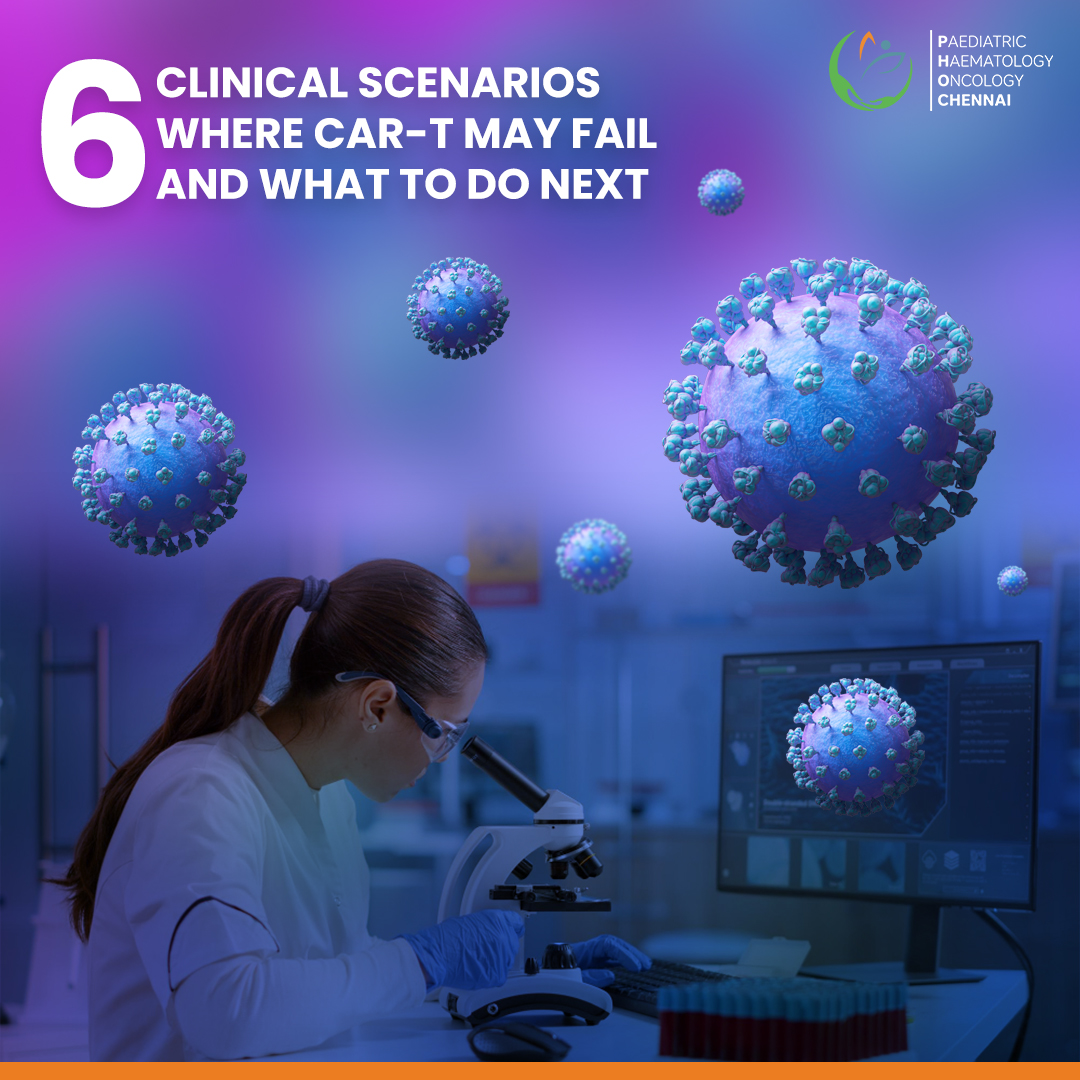6 Clinical Scenarios Where CAR-T May Fail and What to Do Next
Chimeric antigen receptor T-cell therapy has transformed the management of certain hematologic malignancies. But what happens when this powerful tool fails? As more clinicians integrate CAR-T into practice, understanding how and why treatment can fail is critical for managing relapsed or refractory disease.
Here are six clinical scenarios where CAR-T therapy may not deliver the expected response and the next steps you should consider in each case.
1. Antigen Loss
One of the most common mechanisms of relapse after CAR-T therapy is antigen loss. For example, patients treated with CD19-directed CAR-T may relapse with CD19-negative disease.
This loss can occur through various biological mechanisms including gene mutation, alternative splicing, lineage switching, or selection of pre-existing CD19-negative clones.
Management strategy: In cases of antigen escape, subsequent therapy must target alternative surface markers. Dual-targeted CAR-T therapies, such as those targeting both CD19 and CD22 or CD20, may reduce the risk of relapse.
Bi-specific antibodies, such as CD3-CD20 or CD3-CD22 constructs, may also offer salvage potential. In eligible patients, an allogeneic stem cell transplant remains a curative approach worth evaluating following a second remission.
2. Inadequate CAR-T Cell Expansion or Persistence
Some patients show minimal or transient responses due to poor expansion or rapid loss of infused CAR-T cells. This can result from poor starting T-cell quality, T-cell exhaustion, or intrinsic resistance due to immunosuppressive cytokines and cells in the host.
Management strategy: Ensuring optimal lymphodepletion prior to CAR-T administration is a crucial first step. This not only clears space for CAR-T expansion but also reduces suppressive elements such as regulatory T-cells.
Use of newer CAR constructs with enhanced costimulatory domains, such as 4-1BB, has been associated with improved persistence. Investigational strategies include cytokine support, such as low-dose IL-7 or IL-15, which may enhance the survival and proliferation of CAR-T cells in vivo.
3. Suppressive Tumor Microenvironment
Even when CAR-T cells are functional, the tumor microenvironment may suppress their activity. This is more common in solid tumors but can also be seen in aggressive lymphomas and multiple myeloma. Immune-suppressive cells, checkpoint ligand expression, and metabolic inhibitors in the tumor niche may all play a role.
Management strategy: One approach is the combination of CAR-T therapy with checkpoint inhibitors such as PD-1 or PD-L1 blockade. Another strategy involves using "armored" CAR-T cells designed to secrete inflammatory cytokines like IL-12 to remodel the microenvironment.
Novel approaches are being investigated to target or deplete suppressive cells such as myeloid-derived suppressor cells or tumor-associated macrophages.
4. High Disease Burden at Time of Infusion
Patients with high tumor burden or rapidly progressing disease may experience inferior outcomes due to overwhelming antigen load. High tumor burden can also increase the risk of toxicity, particularly cytokine release syndrome and neurotoxicity.
Management strategy: Bridging therapy to reduce disease burden prior to CAR-T infusion is often necessary. This can take the form of cytotoxic chemotherapy, steroids, or low-dose radiation. It is important to balance disease control with maintaining T-cell viability.
In select cases, sequential CAR-T infusions or consolidative therapies such as radiation may also be considered after partial response.
5. Immune Rejection of CAR-T Cells
Some patients mount an immune response against the CAR-T cells themselves, particularly when murine-derived single-chain variable fragments are used. This can limit the persistence of CAR-T cells and compromise efficacy.
Management strategy: The development and use of fully human or humanized CAR constructs can mitigate this risk. Additionally, some clinicians employ immunosuppression, such as low-dose steroids or calcineurin inhibitors, around the time of infusion to reduce the likelihood of immune-mediated rejection.
This is more common with allogeneic CAR-T therapies, where the host-versus-graft response is stronger.
6. Disease Transformation or Clonal Evolution
In some cases, especially with repeated therapies or selective pressure, the disease may undergo clonal evolution. This may manifest as transformation to a more aggressive subtype or as emergence of a genetically distinct clone resistant to current treatment.
Management strategy: When relapse occurs, fresh biopsy is essential. Molecular and phenotypic profiling of the new clone can reveal therapeutic targets or resistance mechanisms.
Treatment should be guided by these results. In some cases, kinase inhibitors, alternative immunotherapies, or cytotoxic regimens may be indicated. Clinical trial enrollment is strongly encouraged for patients with clonal evolution, as therapeutic options remain limited.
Final Thoughts
CAR-T therapy represents a significant advancement, but it is not immune to failure. Understanding the underlying causes in each clinical scenario can guide the next line of treatment.
If it is switching targets, optimizing T-cell function, overcoming the microenvironment, or considering transplant, a personalized and informed approach is necessary to extend survival and improve outcomes.
Are you seeing resistance patterns in your own patients? Take the time to assess disease biology at relapse, understand the failure mechanism, and build your treatment strategy accordingly. Early identification and intervention can make the difference in complex relapsed or refractory cases.






Comments